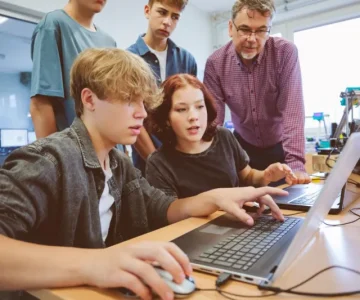In recent years, education has entered a new era, driven by the rapid growth of digital technologies. Among these, game-based learning and gamification stand out as powerful tools for transforming the way students engage with knowledge. The fusion of artificial intelligence and 3D gaming has opened up exciting opportunities to make lessons more interactive, personalized, and inspiring. This approach is not just about playing games—it’s about creating immersive learning environments where students actively participate in their own educational journey.
Why Digital Game-Based Learning Works
Digital game-based learning (DGBL) blends academic content with the mechanics of gameplay, turning the learning process into an active, hands-on experience. Instead of passively receiving information, students interact with the material, explore concepts, and solve challenges within a game’s framework. Research shows that this approach improves knowledge retention, boosts motivation, and can make complex topics—especially in STEM subjects—easier to understand.
The Unique Advantages of 3D Virtual Learning
Three-dimensional games and virtual worlds take engagement to another level by surrounding learners with realistic, interactive environments. Some of the key benefits include:
- Increased Engagement and Focus – Story-driven, immersive settings help hold students’ attention for longer periods.
- Skill Development Beyond the Classroom – Players practice problem-solving, teamwork, and digital literacy—essential skills for the modern workplace.
- Tailored Learning Paths – AI can adapt challenges to match each learner’s abilities, allowing them to progress at their own pace.
- Safe Exploration and Experimentation – Virtual environments make it possible to conduct science experiments or explore historical events without real-world risks or limitations.
Game Mechanics That Drive Learning
The effectiveness of 3D gamification depends heavily on how games are designed. Successful educational games often incorporate:
- Progression and Rewards – Structured challenges that gradually increase in complexity help learners build confidence and mastery.
- Role-Playing Scenarios – Adopting different characters or perspectives makes learning more relatable and memorable.
- Collaborative Play – Multiplayer challenges encourage communication, cooperation, and problem-solving.
- Simulation-Based Tasks – Interactive simulations allow students to test theories and see outcomes instantly.
- Immediate Feedback – AI-powered systems provide quick, personalized feedback, helping learners identify areas for improvement.
- Story-Driven Content – A strong narrative makes learning emotionally engaging and easier to recall.
- Real-Time Interaction – Direct engagement with the game world and peers keeps learning dynamic and responsive.
From Research to Reality
Practical applications of these methods are already showing impressive results. Virtual science labs let students run experiments they couldn’t attempt in a traditional classroom. Historical simulation games place players in past eras, giving them an authentic feel for the challenges and cultures of the time. Such experiences not only enhance understanding but also ignite curiosity.
Looking Ahead
As AI, virtual worlds, and 3D technology evolve, their role in education will only grow. The future points toward fully personalized, highly interactive learning systems that adapt to each student’s needs while making the process exciting and immersive.
Final Thoughts
The combination of AI and 3D gamification represents more than just a teaching trend—it’s a shift toward a richer, more engaging form of education. By integrating thoughtful game mechanics with advanced technology, educators can create learning experiences that not only convey information but also inspire a lifelong passion for discovery.





